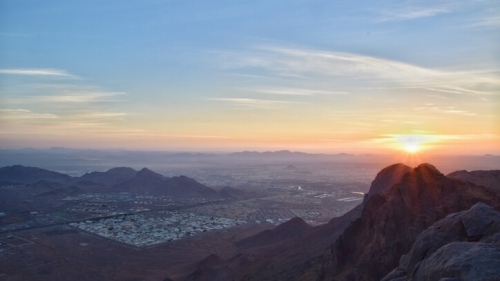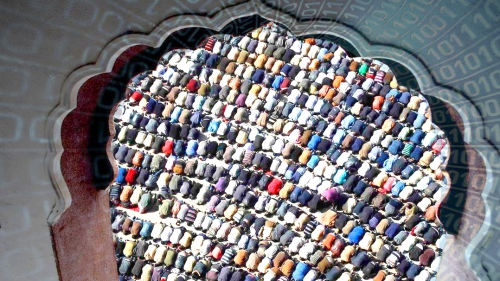With a spy in sky, secrecy becomes history

The Arab world is obsessed with secrecy. That is what I thought until I read of an American engineer arrested in Russia for spying! Apparently, he was caught taking pictures of some open fields. In China too over zealous policemen tend to pull in camera-carrying tourists.
All this will soon become history because, in a few weeks, pictures taken from space of secret military bases or the next-door neighbor's garden can be ordered by credit card. The first civilian spy satellite has been put into orbit by an American company using a former cold war missile launched from the Suobodny Cosmodrome in Eastern Russia.
The first signals were received at a ground station in Norway, confirming that the satellite had begun operations.
It should be ready to start taking orders by February. The cost ranges from 180 to 440 per picture, depending upon whether they come from the satellite's normal output or are specially ordered.
The Clinton administration approved the idea three years ago in order to give American aerospace companies a head start over foreign rivals. Now almost anyone can take a peek at almost anything from space.
Firms are expected to use the pictures for a wide range of applications, including urban planning, map making, disaster relief, oil exploration, mining, etc.
The media (except for the Arabic) are likely to cash in on opportunities to photograph environmental and military problems.
The satellite pictures can pick out features on the ground as small as two meters wide and can distinguish between a car and truck. Within two years the next generation of satellites will be able to pick out objects measuring half a meter wide.
They will also be able to focus on films and cameras being seized by over-zealous policemen.
How much the world has changed in the last 30 years and how little some minds have changed in the last 50!
Nowadays, all over the world, air traffic is steadily increasing. We consider air travel very safe; however, today we are witnessing more aircraft mishaps around the world which give the impression that air travel is not so safe after all.
During the last month of December many plane crashes, accidents or near-disasters have been reported in the press, with no mention of the numerous "near-misses".
If we recall some of the newspaper reports during the past few weeks we can find stories about plane accidents, near-misses, minimum fuel alert over London's busy Heathrow airport, etc. A couple of weeks ago, a PIA jumbo jet veered off the runway following an aborted take-off at Dubai International airport; the plane suffered slight damage to its right wing in the accident. The crashes of SilkAir, the near-tragic crash landing of a Bangladeshi domestic airliner, the TWA explosion over the Atlantic ocean, the Indonesian jet crash due to turbulent weather, the Russian aircraft tragedy in Sharjah, etc. have all raised fears among travelers, making them think that air travel is unsafe. The latest reported mishap involved a Turkish plane RJ-100 which skidded off the tarmac while landing in the Black Sea town of Samsun last Sunday.
Is air-travel unsafe? No, nothing could be further from the truth. Exactly because air traffic is potentially so dangerous, the industry makes huge efforts to ensure the passengers' safety. The planes undergo rigorous checks, the staff are well-trained, and even the ground staff in the airports have to meet high standards. The pilot, navigator and other air-crew members receive the latest training in using the internationally-accepted uniform code of communication which enables them to understand clearly the instructions of the air-traffic control staff.
After each crash or accident, aviation authorities conduct an analysis to find out the real cause of the mishap; Black Boxes are examined and the probable findings are usually "engine failure, pilot error, lack of proper communication between the pilot and the ground control staff, obsolete navigational equipments", or some other technical fault. The cause of the head-on midair collision involving a Saudia Boeing and an obsolete Kazhakistan cargo plane in New Delhi's single corridor airpassage during November 1996 was reported to be due to the Kazhak pilot's poor understanding of the English instructions given by the ground control staff and also the lack of an anti-collision warning system.
Of course, it is possible for a less well-equipped airline to try to cut corners, but the vast majority of the industry acknowledges its responsibility to its customers, and meets the accepted standards.
The industry should never compromise air safety because of economics or because of reduction of maintenance costs. These steps could cause huge loss of life, both in the air and on the ground.
In the light of this, it is the duty of the aircraft industry to convince us that they have a well-qualified and well-trained crew with the most modern safety equipment and maintenance standards for reducing the frequency of aircraft mishaps.

















